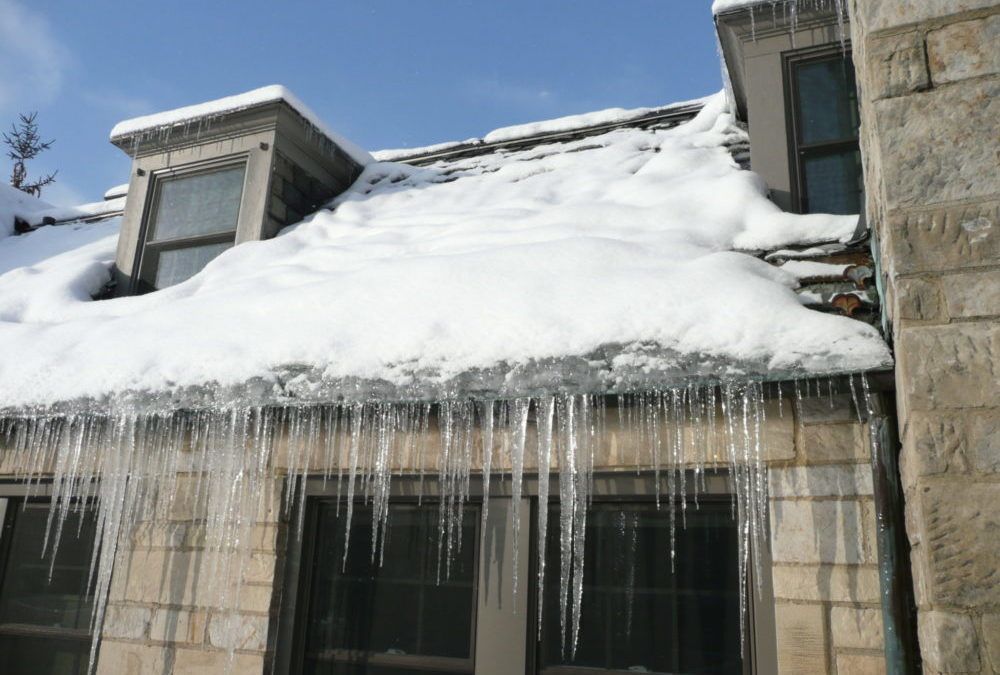
Though no one is quite ready to talk about winter yet, the cold and snow are mere months away. Along with the wind and freezing temperatures, the other big hazard for homeowners is ice. We all know that ice can make for slippery conditions for pedestrians and vehicles. However, some Midwest homeowners aren’t aware of how ice — and more specifically ice dams — can damage their roofs. An ice dam is basically a ridge of ice that forms at the edge of your roof and prevents water from draining off. The water that backs up as snow melts can then leak into the home and cause damage to the roof itself as well as to the ceiling, walls, insulation, and other areas.
Ice dams are the result of an interaction between the amount of heat lost from your home’s roof, the snow cover on your roof, and the outside temperature. Ice dams form when there is snow on the roof and higher portions of the roof’s outside surface are above 32 degrees Fahrenheit while lower ones are below this temperature. The snow that is on the surface that is above 32 degrees will melt and, as water flows down the roof and reaches the portion where it’s below 32 degrees, it freezes, and an ice dam forms. As more melting snow reaches it, the ice dam grows larger.
However, it will only freeze on the portions of the roof that are above 32 degrees. The water backing up behind it remains liquid and finds cracks and openings in the roof and flows into the attic space and then into exterior walls and ceilings. The heat from the house, heat loss from air leakage, exhaust systems, and chimneys are common culprits that lead to different temperatures on roofs that result in ice dams. Controlling the heat loss in the home is one of the best ways to prevent them from forming. You can do this by taking the following actions:
- Remove snow from your roof after a snowstorm.
- If water is flowing into the house, make channels through the ice dam to allow water to flow through and off the roof. You can do this by hosing the area with tap water on a warmer day. This is a temporary fix and should not be used as a long-term solution.
- Seal air leakage paths between the house and attic space.
- Increase insulation to cut down on heat loss by conduction.
- Consider natural attic ventilation systems to dry the attic space and remove heat build-up during the summer months. By preventing snow from melting, you are reducing the opportunity for ice dams to form. However, it also means your roof will bear a greater snow load. Ensure your roof can carry this additional load by talking with a roofing professional such as those at Hometown Roofing. Ice dams can be very damaging to your roof and the rest of your home. They can also lead to the growth of mold and mildew that are unhealthy for you and your family members. If you do have an ice dam that causes dampness or wet conditions in your home, dry them out as best as possible, then try to get rid of the source of leaking. You may need to speak with a professional who specializes in mold removal if the problem has been long-term. Then talk to a roofing professional about taking steps to prevent further ice dams. If you’d like a free inspection of your roof to see if it is ready to take on the Nebraska winter, please call us at Hometown Roofing.

